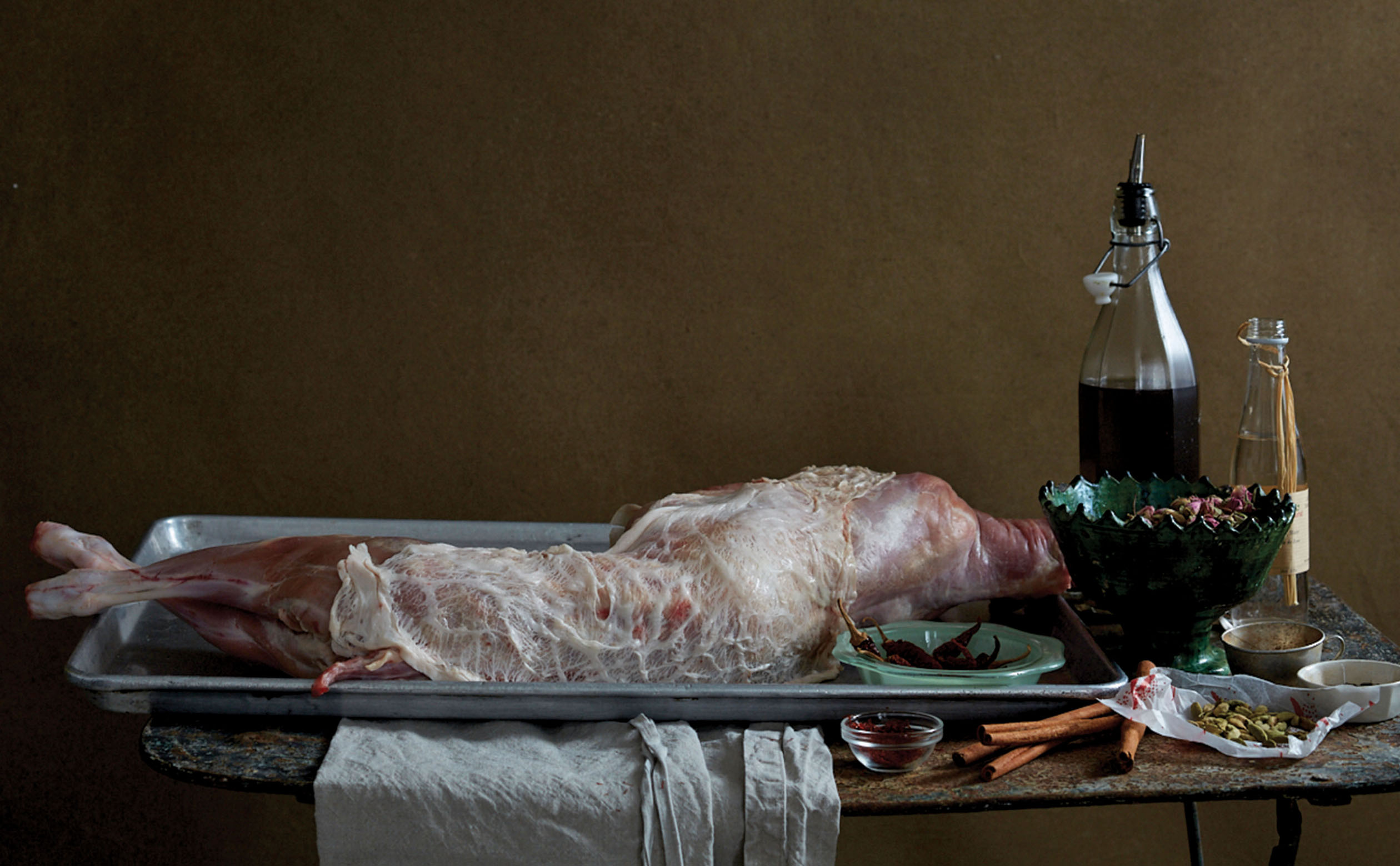
Eid al-Fitr (the feast of breaking the fast) marks the end of Ramadan and it is when Muslims all around the world, at least those who can afford it, buy a whole sheep or goat, or even a baby camel, to slaughter and give thanks to Allah for having marked the end of another year’s fast. Some families will use part of the animal for their own festive meals and distribute the rest to those less fortunate, while others will distribute the whole animal, or more than one animal, depending on their means.
Eid al-Adha (the feast of the sacrifice), which comes about two months after Eid al-Fitr, is another occasion for buying whole animals, but this time, the meat is usually feasted upon by family and friends, although many will also share some with those in need.
In the early days of Islam, when the Prophet Muhammad lived in Mecca, an oasis in the Arabian desert, his diet and that of those around him consisted of mostly meat, dairy, and dates. The meat they ate daily would have been cuts that they grilled, stewed, or boiled, but when they celebrated special occasions or received important guests, they roasted whole lamb, goats, or baby camels.
Serving a whole animal, whether it is milk-fed or fully grown, is still very much a part of Muslim culinary tradition, whether to honor guests, to welcome family members returning from long trips abroad, or to celebrate religious or special occasions. Whole animals are also on the menu for large family gatherings on weekends—in the Arabian Gulf, Friday is the day when the whole family gathers to eat together and enjoy each other’s company. In cities, it will be lamb or goat, but in the desert, the weekend family meal of Gulf Bedouins will often consist of a whole roast baby camel served on a bed of rice.
The way whole animals are cooked varies from one country to another. In the Emirates, the animal is marinated in a mixture of spices, rose water, saffron, and lemon juice, then wrapped in a wet straw mat and buried in a pit oven to roast slowly until the meat falls off the bone. Another spectacular way of cooking whole animals, which is reserved for grand occasions such as weddings or state occasions, is to roast whole baby camels in the seated position, usually by burying them in a very large pit oven to let them slow-roast overnight. The seated roast animals are then carefully lifted and placed on huge platters of rice that are laid on large tables in the majliss (reception area) or banquet hall. Guests gather around each roast camel and tear pieces of meat with their hands to eat with the rice. Once they have had their fill, they will make way for other guests (usually less important) and will go to wash their hands, and so on until all the guests have eaten. The leftovers are then taken back to the kitchens for the staff to also enjoy the occasion.
My first-ever experience of being served a whole animal was in Sharjah, one of the seven United Arab Emirates (UAE), where Sheikha Bodour al-Qasimi, the daughter of the Emir, had invited me to introduce me to the Emirates’ culinary delights. On my first day there, she had kindly arranged for a group of women to prepare a veritable feast in Sharjah’s Heritage Center. I still remember the roast baby goat, served on a bed of fluffy rice, and garnished with a wonderful sweet-savory mixture of caramelized onions, yellow split peas, and raisins. Absolutely exquisite! A few years later, I was invited to another amazing meal in Doha, Qatar, by Mrs. Al-Fardan, a member of a preeminent Qatari merchant family. She also served a roast baby goat, but hers was laid on a bed of fluffy saffron rice with only a plain garnish of crisp caramelized onions. Less complex but just as exquisite!
Domestic ovens are not large enough to take whole animals, even when they are small, so I have scaled down most of the recipes for whole animals to a shoulder, a leg, or a quarter animal. The dish may not look as spectacular but it will be just as delicious and will still impress your family and friends. And I have, of course, included recipes for many meat dishes using a variety of cuts, which people eat on normal days.
I have also included in this chapter recipes that use dairy, a direct product of the whole animal and an essential part of the diet of most Muslims. There are recipes for how to prepare various dairy products as well as recipes for using them in various dishes, yogurt being an important ingredient in the Middle East, Central Asia, and the Indian subcontinent.
